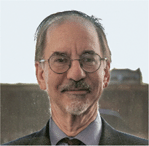
By Adam Gamoran, Science Magazine
These are dark times for science and public policy in the United States. In June, it was revealed that the White House suppressed the congressional testimony of a State Department scientist on the implications of climate change for national security—just the latest example of evidence undercut by ideology. Yet, despite this gloomy backdrop, there are glimmers of scientific evidence used to improve policy and practice. In July, a bipartisan group formed the Congressional What Works Caucus to encourage federal investments in evidence-based programs and policies. Since January, the Foundations for Evidence-Based Policymaking Act has pushed federal agencies to develop learning agendas and appoint chief data officers to make better use of government data. What will it take to keep the light of evidence burning and ensure that the best science informs important decisions of our time?
The current administration has taken steps to undermine the integrity of federal statistics agencies, eliminate or marginalize science units in federal agencies, slim down or drop expert advisory boards, remove scientific information from federal websites, and ban agency employees from using the term “scientific evidence” in budget requests. In June, President Trump directed federal agencies to disband at least one-third of their expert advisory committees by 30 September.
Nevertheless, there are signs that data, evidence, and rigorous evaluation persist. In June, the nonprofit Bipartisan Policy Center published Evidence Works, a compendium of 20 cases of evidence use at the federal, state, and local levels in the United States, with many reflecting action since 2017. One case is the Family First Prevention Services Act of 2018. Guided by years of research, this federal law has created funding opportunities to encourage states to provide services to meet families' mental health, substance use, and parenting needs to help keep children at home instead of sending them to foster care. Ultimately, Family First will provide better lives for thousands of children and families.
State and local leaders are also seeking to use evidence, often in collaboration with researchers. By investing in research-informed programs, for example, the New Hampshire Charitable Foundation has made progress on early childhood education, family and youth supports, substance abuse prevention, and education and career pathways. Likewise, the National Network of Education Research-Practice Partnerships is fortifying the capacity of state education agencies and school districts to collaborate with researchers to identify ways to improve academic and socio-emotional outcomes for students. Findings from such collaborations are often consequential in policy and practice because the questions examined derive from the needs of the local districts and state agencies involved. In one well-known example, high school graduation rates in Chicago increased by more than a third after the district implemented an early warning system (to identify students at risk of dropping out) informed by findings from a research–practice partnership between district officials and university researchers.
So how can research, science, and evidence remain integral to public policy? Public and private funders must redouble their commitments to support scientific inquiry, as in 2018 when Congress increased the budgets of several science agencies after the administration had proposed cuts. Philanthropy must also fund evidence-based solutions and the science behind them. The Community Foundation Opportunity Network, for instance, which unites local philanthropies committed to equity, is mobilizing leaders to adopt evidence-based approaches to narrow opportunity gaps for young people in their communities. More researchers should collaborate with policy-makers to develop research agendas, to increase the chances that research findings will be used. One example of the promise of such partnerships comes from the United Kingdom, where government-funded Applied Research Collaborations have helped narrow the divide between research production and the use of research evidence in health care policy and practice.
It's clear that contributions from government, philanthropy, and research organizations are keeping evidence aglow, even in dark times. Let's make sure that such efforts continue to light the path ahead.
http://www.sciencemag.org/about/science-licenses-journal-article-reuse
This is an article distributed under the terms of the Science Journals Default License.